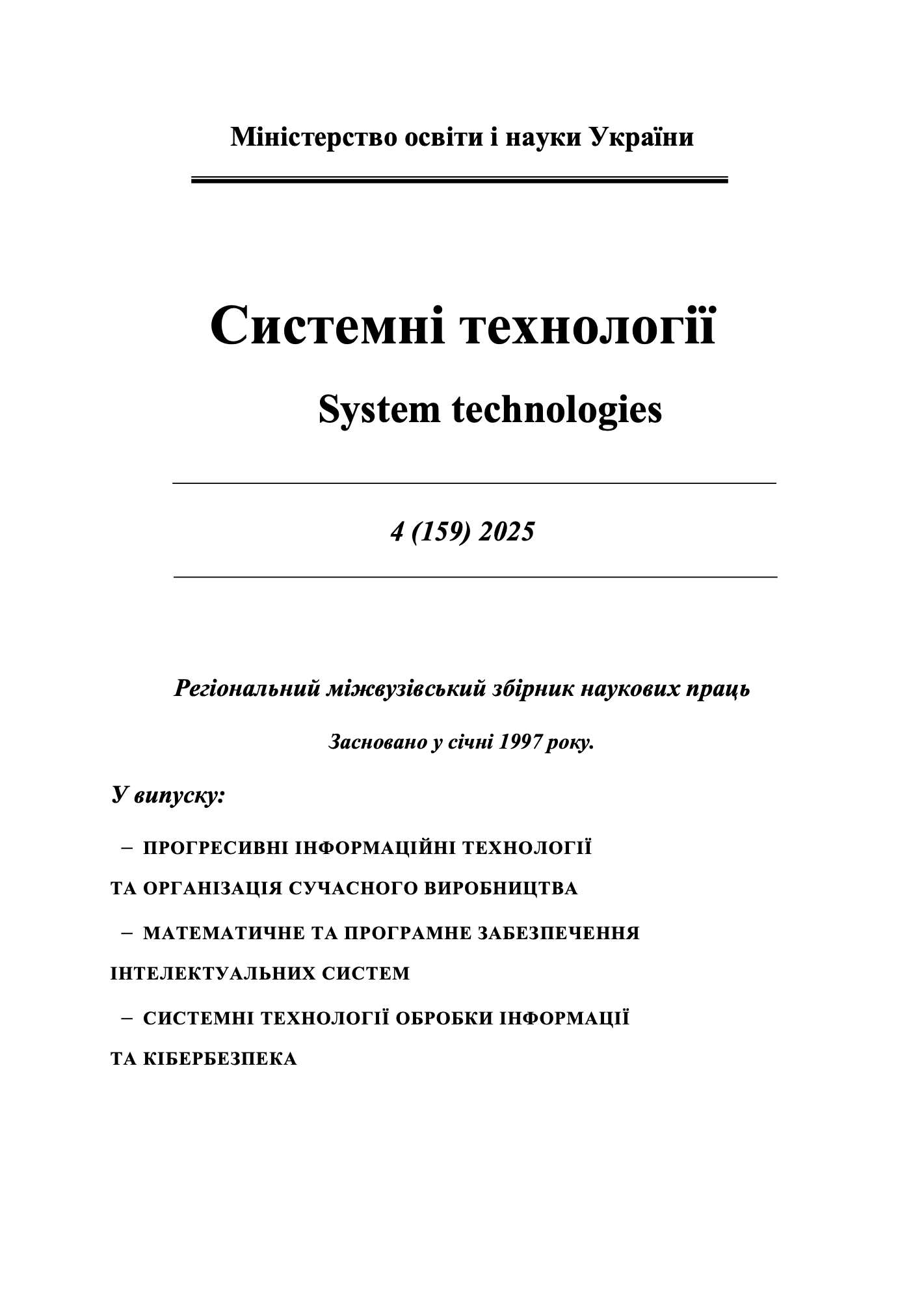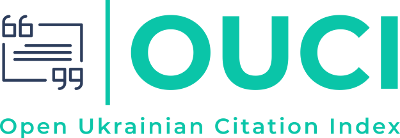Satellite monitoring and assessment of the degree of pollution of water bodies under the influence of military operations
DOI:
https://doi.org/10.34185/1562-9945-4-159-2025-12Keywords:
water resources, water bodies, military operations, satellite monitoring, assessment of the degree of pollution, remote sensing methods, spectral indices, NDWI, NDTI, Sentinel-2.Abstract
The primary modern methods of monitoring water bodies, their pollution status, and the impact of military operations on them are investigated. Generally accepted, standardised methods for assessing water quality in water bodies include ground-based sampling, which is inefficient and expensive under certain conditions. Due to the full-scale invasion and active military operations, as well as the occupation of territories, this method loses its relevance. The study aims to determine the indicators and characteristics of the processes leading to changes in surface waters and to assess the degree of pollution of water bodies under the in-fluence of military operations. The most suitable approach for practical use over large areas is the remote approach, which combines ground and satellite measurements to detect pollu-tion in water bodies. The paper describes the main spectral water indices and data sets that can be used to apply satellite monitoring methods. The availability of archival data opens up the possibility of comparing the results obtained and analysing the factors influencing the state of the water bodies. Using the example of the man-made disaster at the Kakhovka HPP, the adaptability of indices for identifying areas with surface water pollution in the Black Sea basin is analysed. The results show that the NDTI spectral index should be used to assess the impact of military operations and evaluate surface water contamination. Compared to the NDWI, the surface water turbidity index allows the identification of areas with contamination due to signs caused by natural or man-made processes. The NDWI spectral index fixes the boundaries of water bodies without detailing the pollution on the water surface due to chang-es in transparency, color, or other characteristics. The work describes data sets and demon-strates the potential of using satellite monitoring to analyse large areas.
References
The global risks report 2025 20th edition. – Cologny, Switzerland: World Economic Fo-rum, 2025. URL: https://reports.weforum.org/docs/WEF_Global_Risks_Report_2025.pdf (da-ta zvernennia: 11.04.2025).
Shcho Rosiia robyt z ukrainskymy richkamy pid chas viiny: 6 milioniv liudei cherez viinu ne maiut vody. Open Dnister. 30.09.2022. URL: https://dnister.in.ua/articles/239825/scho-rosiya-robit-z-ukrainskimi-richkami-pid-chas-vijni-6-miljoniv-lyudej-cherez-vijnu-ne-mayut-vodi (data zvernennia: 11.04.2025).
Zabrudnennia Chornoho moria yak naslidok avariinoi sytuatsii, yaka sklalasia pislia pidryvu hrebli Kakhovskoi HES. UkrNTsEM.
URL: https://sea.gov.ua/index.php/2023/06/27/ges_explosion_conseq/ (data zvernennia: 11.04.2025).
Breus D. S., Levchenko M. V. Metody otsiniuvannia ta normuvannia yakosti pryrodnykh vodnykh resursiv. Tavriiskyi naukovyi visnyk. Silskohospodarski nauky. 2019. №. 110 (2). S. 126-131.
Kavzoglu T., Goral M. Google Earth engine for monitoring marine mucilage: Izmit Bay in Spring 2021. Hydrology. 2022. Vol. 9. №. 8. P. 135.
URL: https://doi.org/10.3390/hydrology9080135 (дата звернення: 11.04.2025).
Das S., Nandi D., Thakur R. R., Bera D. K., Behera D., Đurin B., Cetl V. A Novel Ap-proach for Ex Situ Water Quality Monitoring Using the Google Earth Engine and Spectral Indices in Chilika Lake, Odisha, India. ISPRS International Journal of Geo-Information. 2024. Vol. 13. №. 11. P. 381. URL: https://doi.org/10.3390/ijgi13110381 (дата звернення: 11.04.2025).
Berka C. S. Relationship between agricultural land use and surface water quality using a GIS: Sumas River Watershed, Abbotsford, BC: Doctoral dissertation. University of British Columbia. 1996. 174 p.
Environmental Indicators of Water Quality in the United States. USEPA Rep. 841-R-96-002. U.S. Environmental Protection Agency. Office of Water. Washington. D.C. 1996.
EU Water Framework Directive 2000/60/EC. Official Journal of the European Communi-ties. 22.12 2000. L 327/1. 118 p.
Sergieieva K., Kavats O., Vasyliev V., Kavats Y., Kovrov O. Machine learning-based monitoring of war-damaged water bodies in Ukraine using satellite images. CEUR Workshop Proceedings. 2024. 3790. P. 422–434. URL: https://ceur-ws.org/Vol-3790/paper37.pdf (дата звернення: 11.04.2025).
Brooks B.W., Lazorchak J.M., Howard M.D., Johnson M.V.V., Morton S.L., Perkins D.A., Reavie E.D., Scott G.I., Smith S.A., Steevens J.A. Are harmful algal blooms becoming the greatest inland water quality threat to public health and aquatic ecosystems. Environ. Toxicol. Chem. 2016. Vol. 35. P. 6–13.
Arabi B., Salama M.S., Pitarch J., Verhoef W. Integration of in-situ and multi-sensor satellite observations for long-term water quality monitoring in coastal areas. Remote Sens. Environ. 2020 Vol. 239. P. 111632.
Ahmed A. N., Othman F. B., Afan H. A., Ibrahim R. K., Fai C. M., Hossain M. S., El-shafie A. Machine learning methods for better water quality prediction. J. Hydrol. 2019. Vol. 578. P. 124084.
Wang P., Yao J., Wang G., Hao F., Shrestha S., Xue B., Xie G., Peng Y. Exploring the application of artificial intelligence technology for identification of water pollution character-istics and tracing the source of water quality pollutants. Sci. Total Environ. 2019. Vol. 693. P. 133440.
Sagan V., Peterson, K.T., Maimaitijiang, M., Sidike, P., Sloan, J., Greeling, B.A., Maa-louf, S., Adams, C. Monitoring inland water quality using remote sensing: Potential and limi-tations of spectral indices, bio-optical simulations, machine learning, and cloud computing. Earth-Sci. Rev. 2020. Vol. 205. P. 103187.
Peterson K.T., Sagan V., Sloan J.J. Deep learning-based water quality estimation and anomaly detection using Landsat-8/Sentinel-2 virtual constellation and cloud computing. GIScience Remote Sens. 2020. Vol. 57. P. 510–525.
Wang J.-H., Li C., Xu Y.-P., Li S.-Y., Du J.-S., Han Y.-P., Hu H.-Y. Identifying major contributors to algal blooms in Lake Dianchi by analyzing river-lake water quality correla-tions in the watershed. J. Clean. Prod. 2021. Vol. 315. P. 128144.
Niu C., Tan K., Jia X., Wang X. Deep learning based regression for optically inactive inland water quality parameter estimation using airborne hyperspectral imagery. Environ. Pollut. 2021. Vol. 286. P. 117534.
Sun C., Chen L., Zhu H., Xie H., Qi S., Shen Z. New framework for natural-artificial transport paths and hydrological connectivity analysis in an agriculture-intensive catchment. Water Res. 2021. Vol. 196. P. 117015.
Sun X., Zhang Y., Shi K., Zhang Y., Li N., Wang W., Huang X., Qin B. Monitoring wa-ter quality using proximal remote sensing technology. Sci. Total Environ. 2022. Vol. 803. P. 149805.
Becker R.H., Sultan M.I., Boyer G.L., Twiss M.R., Konopko E. Mapping cyanobacterial blooms in the Great Lakes using MODIS. J. Great Lakes Res. 2009. Vol. 35. P. 447–453.
Downloads
Published
Issue
Section
License
Copyright (c) 2025 System technologies

This work is licensed under a Creative Commons Attribution 4.0 International License.















